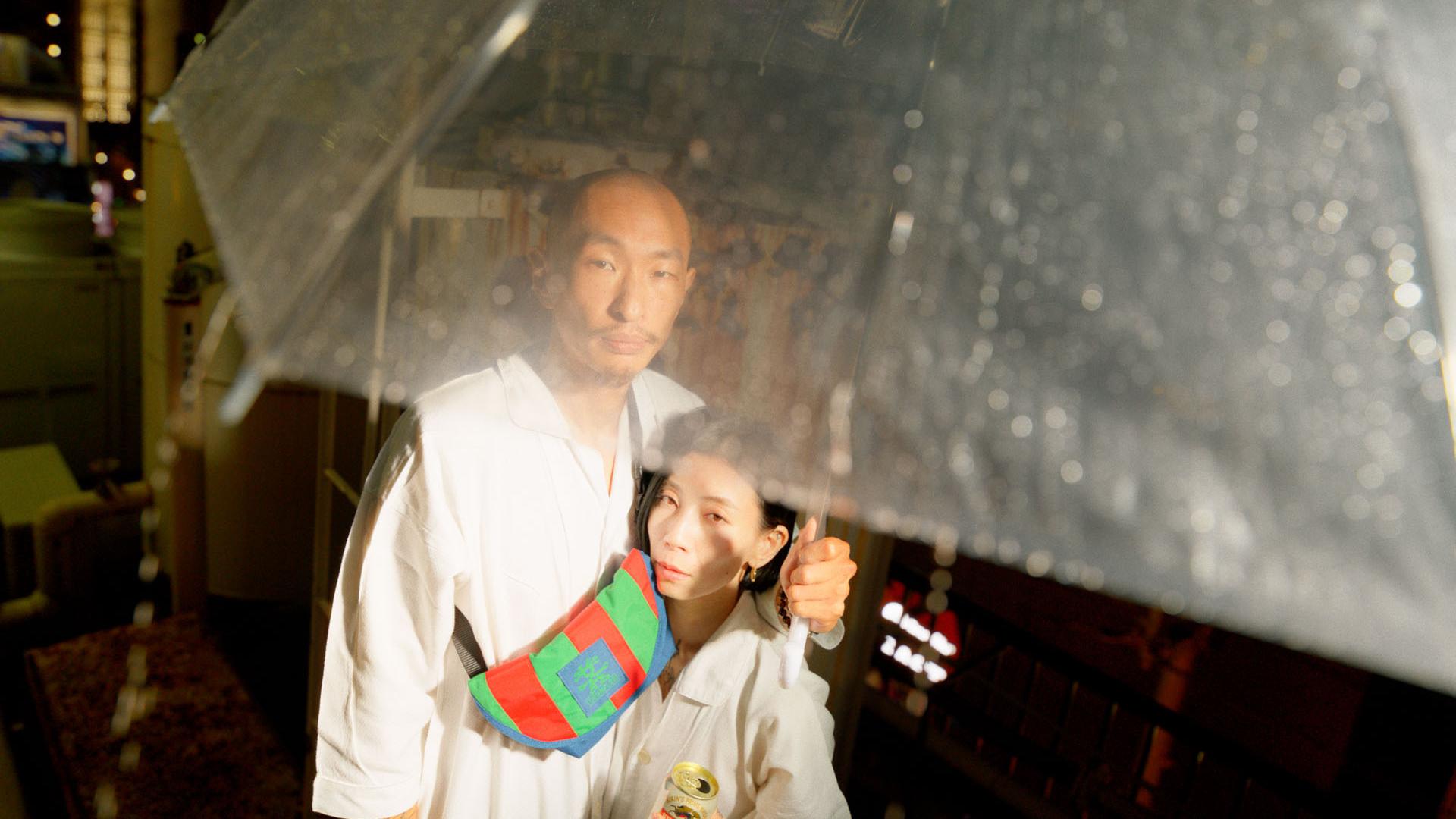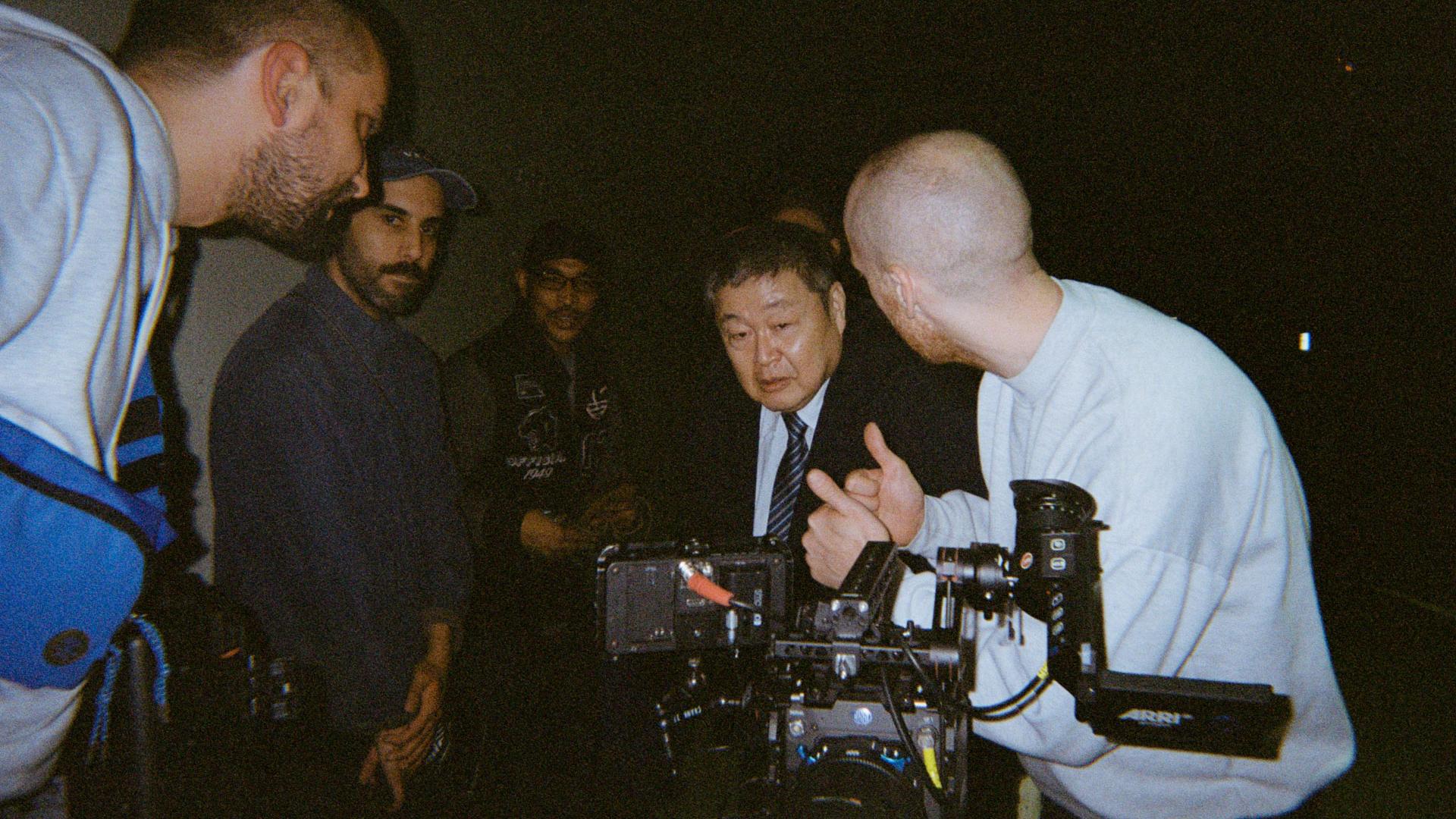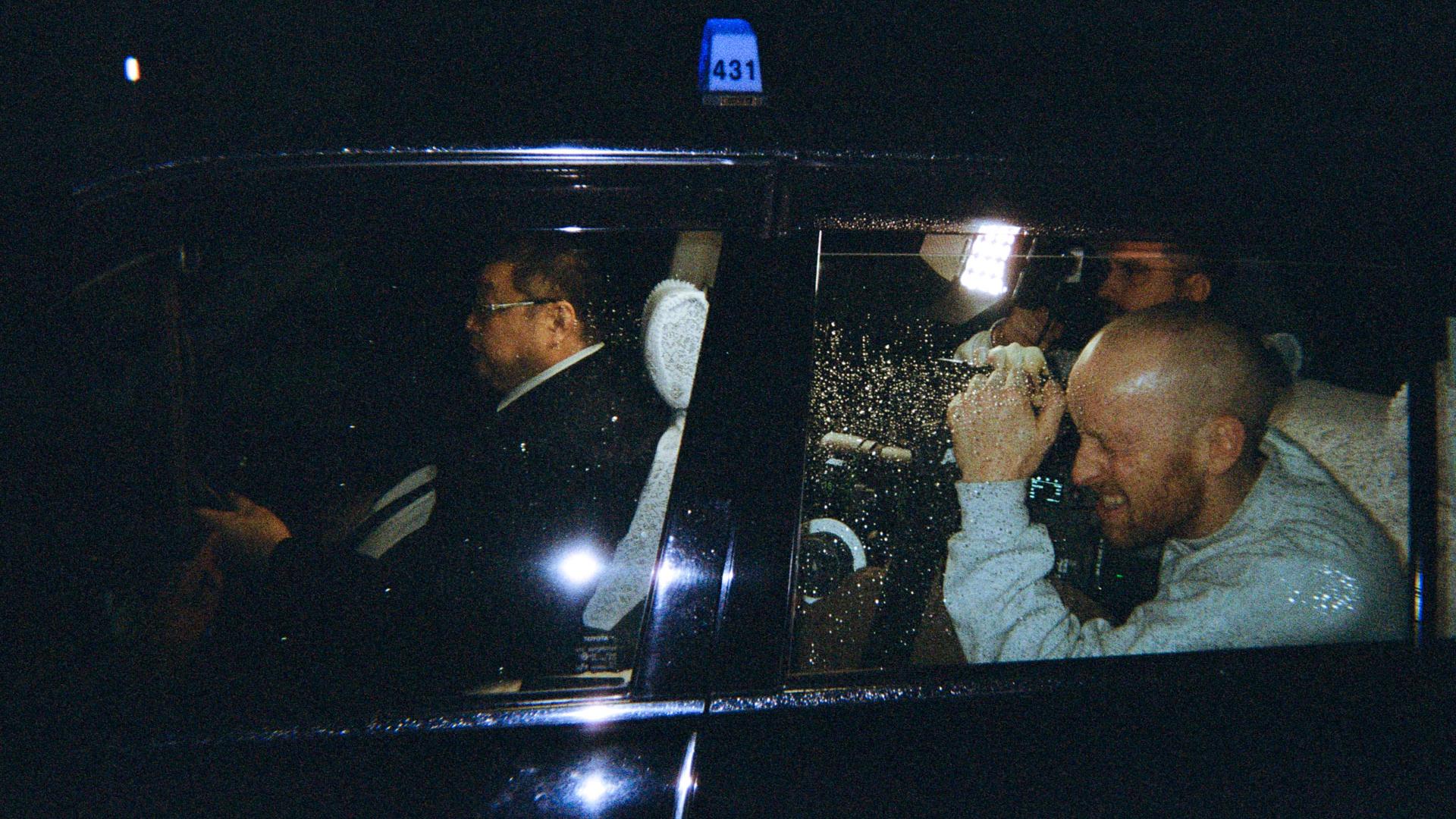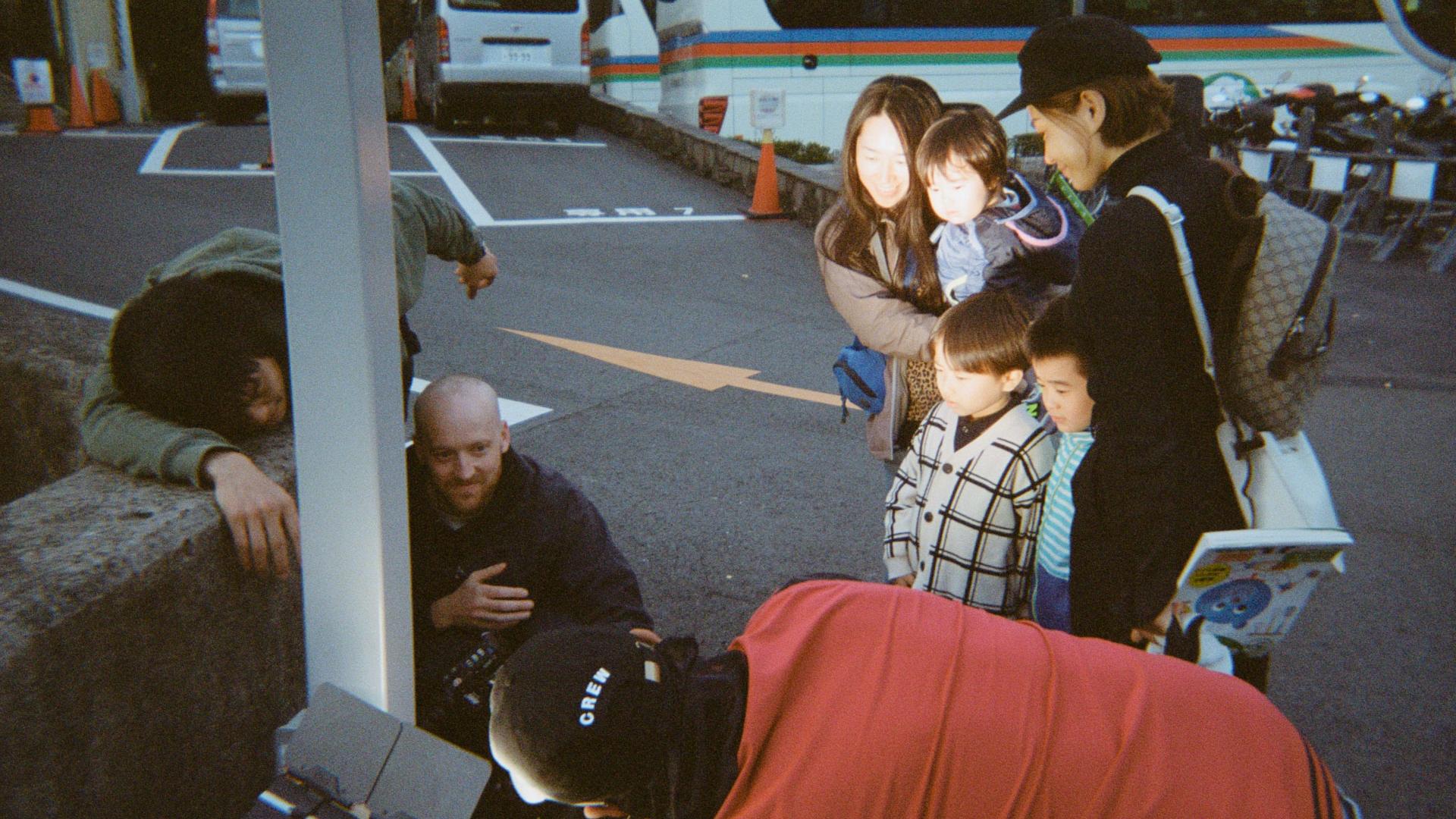Tokyo Beckoning: An Interview with John Angus Stewart and Max Coles

As part of its partnership with MIFF, Crumpler will screen the transportive, evocatively tactile video series Life Zone prior to select titles in the 2023 program. We speak to director John Angus Stewart and producer Max Coles of PHC Films about atmosphere, ‘hunting’ moments, and capturing the mood and mystique of Japan.
Why did you decide to set Life Zone in Tokyo?
John: Tokyo is like a playground. Everyone says that, but we don’t mean it in the way you do; I think there is a misconception Australian tourists have about Japanese culture. It’s got a lot more teeth than people seem to really understand – and I mean that in a glowingly positive way. I think people love the fantasy that Japan is full of people bowing and smiling at you, laying gifts at your feet. People misread the cuteness as a softness, which is just not accurate. Like, you’ll see a pharmacy that might have a little pill with a moustache as the logo, smiling at you, beckoning you to come in and buy painkillers or whatnot.
It’s just a different temperature there than here. It’s really got so much wonder to it, but more so because of what is happening metres away from the Shibuya Crossing or the Tokyo Tower. It’s the shadows and the corners that are full of wonder, not necessarily what is under the lights. It’s what’s on the sixth floor of a building with the label scratched out. Japanese culture is so advanced that it isn’t hard to put it next to Australian culture without feeling slightly embarrassed. They have so much history and tradition that they embrace and lace into their modern culture, so the past and the present are almost indistinguishable. Whereas in Australia, we ignore the oldest and richest culture imaginable – full of traditions and history – and proceed on a path to a culture that is leaving behind what is most core to us.
But I guess to answer the question honestly: there’s an explosive clash of style and personalities in Tokyo that really doesn’t exist in many places I’ve been to. Crumpler, more than any brand I’ve ever known, genuinely acts based on ‘what feels right’ and ‘what feels interesting’, and in that spirit, they gave us the ability to exercise that within ourselves as filmmakers. So we went with what felt right.
Max: One of Crumper’s original founders, Dave Roper, recently bought the company back from a private equity firm that had owned it since 2015. This is the first campaign back after somebody spent some years sprinting the brand in a dull direction. So much of what was in our heads early on was trying to immediately react to that history, push against the banal, and bring back the colour and life and risk-taking of the 1990s to 2000s Crumpler. Not purely in decisions we knew would end up on screen, but in our production method as well, we wanted it all to be tied together. The right shoot approach would foster the right output.
We knew Tokyo ticked all these boxes, and we found the perfect local crew in Nishi and Reggie, so we booked flights.

Header: Still from Life Zone | All other images: Behind the scenes (photos: Tim Fenby)
The videos depict a swathe of human experiences, but with a distinctly Japanese lens: childhood, socialising, work drinks, eroticism. Can you tell us the concept or message behind the series?
J: Those things are just such a big part of Japanese culture; they just presented themselves as paths for us to take the deeper and deeper we got. To be honest, the making of these vignettes was basically like making a documentary, but we were only shooting one shot at a time in a very specific way. Our producers in Tokyo would ask us, “What do you want?” and we would go from there. They would call people, and those people would know people, and that person would agree to meet up with us. It might have been that very night at midnight, or it could be a night from then. Sometimes we’d start the night of shooting and not know where we were going to end up – we’d all just jump in the van and start hunting.
That makes it sound sinister, but it was more like birdwatching than hunting, actually. We treated the eroticism in the same way as we treated the work drinks. Again, we saw ourselves as passive observers rather than active aggressors. So much of it was about capturing a platter of emotions that we could then drip onto a canvas. And the only way to do it was the hard way, which was doing it for real. In theory, doing something for real sounds easier, but it’s most often so much harder and rarely works because you just have to wait and, as a director, you have to have more patience than directing an actor. The peaks were stratospheric and the gullies were subterranean. But so often, when we were filming, we’d look at each other and just say, “This is f*cked up” – and, most of the time, we meant it in a positive way.
M: We landed with an ARRI Alexa 35 and a list of maybe 100 ideas – things we wanted to try to shoot in our week there. We got through a huge number of them, really; many more than what you see in the edits so far. They were each just some combination of cast X doing action Y in location Z with no real narrative thread between them. Setups we thought were interesting in isolation, visually or narratively. It was about showing the Crumpler bags involved in as many real and interesting lives as possible and shooting that in the very specific way we had planned.
During the shoot, it was all about trying to get a peek at that whole picture – the sum of those parts showing this wide range of humanity, and how it looks in the context of an edit or as a campaign – which can be hard to keep straight in your head when a setup isn’t working, you’re sleep-deprived and hungover on our nightly firehose of wrap highballs. But we held our collective nerve, stuck to the plan and it seemed to work.

There’s a lot of warmth to the imagery – night-time shots, neon lights, lamps, light through smoke. How did the team achieve this tactile aesthetic?
J: Tokyo feels like 1970 having an acid trip of 2150: green fluorescent tubes lining smoke-filled vinyl hallways and wet, slicked streets sprayed with orange sodium vapour. It really whips itself into this saturated hurricane of stimuli. It’s wonderful like that (especially after your third tall can of shochu, vodka and soda). So much of the idea came from our desire to replicate cinematically the feeling you get from taking a flash photo, and mainly a flash photo from film. There’s this warmth that can blow out the highlights, sure, but within that loss of information you get this moment of pure candidness from the subjects – one where you always wonder, What would be the next thing they did after that photo was taken? And we tried as hard as we could to replicate that with the moving image.
We shot everything relatively overcranked (slow motion). We used these two really heavily portable lights that ran off even heavier portable batteries, and we basically timed them to strobe when we were shooting our subject. It was more like a photoshoot than a film shoot. We would basically shoot in 10-second bursts, with the strobe going off like a flash three times – it felt strange driving for an hour in a car to shoot a taxi driver for 30 seconds all up. In terms of the rest of the light, that was all as is. We just left the world as we found it; so often, the hard part was deciding which direction to shoot because it all looked so interesting and immersive. But heavy restrictions lend themselves to a heavy aesthetic.
M: John and I had both been to Japan a few times – together and separately – so we knew exactly how ambient light looked in all kinds of locations there, and had spent years discussing it. Adding to what we knew was already there, the flash-photo idea of John’s was so strong for a production of our size. It naturally simplifies frames and focuses attention in a way that we couldn’t do through any set dressing, lighting or anything else. The ‘set’ really was just wherever we pointed our camera flash contraption: this heavy bomb-looking thing we’d assembled from LED panels, batteries, metal pipes and gaffer tape. That portability also let us get into much more interesting situations than if we’d had a more traditional crew.
We wanted to give the LED flashes some organic texture wherever possible. Most of the crew was smoking nonstop, anyway, so that was easy. I remember looking over at John in the love hotel, mouth filled with five darts lit at once, trying to smoke up the room.

What was it like working with King Gizzard & The Lizard Wizard’s Joey Walker on the score?
J: Working with Joe is just a part of almost everything we do. We’ve been working together for years – with his band and on his solo stuff – so it’s pretty locked in now. He’s one of (if not the) most talented people we know, so that makes things a lot easier first of all. Having said that, originally we shot having a tone in our heads of what type of music we wanted. Mostly dreamy, doo-wop waltz type of stuff. For any musician, sending them a playlist of songs and being like “Make stuff like this” is quite counterproductive and rarely works how you want it to, especially when the music is so of the time: The Paris Sisters, Ketty Lester, Irma Thomas, The Shangri-las, etc.
But the essence of what Joe did was to take the tone or the atmosphere of what makes those songs so dreamy and romantic, and rewrap them into something that meant something to him, thus meaning something for the project. We ended up looking at a lot of ragtime-era stuff, mainly because of the disintegration of the recordings, replicating and at times sampling sections of it from our own voice. But Joe is so much a part of what we do, it’s hard to really know how it works – it just sort of works.
M: Joe’s sheer creative muscle – his ability to change up his sound, to produce a heaving techno track one day, then the next day compose ad score from snippets of 1920s public-domain ragtime – is staggering and, truthfully, a bit annoying for all of us to witness.
Why has Crumpler come aboard as a MIFF Partner? What are you most looking forward to at MIFF?
M: We’ve always talked about this being a cinema campaign first, made for a big screen, so with Crumpler being such an iconic Melbourne brand, the MIFF screenings make perfect sense. Without knowing the festival program yet, I guess for now I’m most excited to see our own ads at MIFF …
J: In the most earnest terms, Roper is a ‘patron of the arts’. There is no other way to say it, even though that term does get thrown around with an excruciating vigour. He really is. I’ve never met a brand that actively sits down and thinks, How can we be involved in more things that matter to us? Lucky for all of us, the brand loves film and music. I think Crumpler being involved in MIFF makes a lot of sense; Crumpler supports creativity, plain and simple. And there are those in the industry who project support but have no real identity or core, whereas Crumpler comes from a place of pure creativity. Crumpler’s seed came from a bunch of bike messengers sitting around a table in Fitzroy, drinking beers and trying to figure out ways they could fit more stuff into their bags.